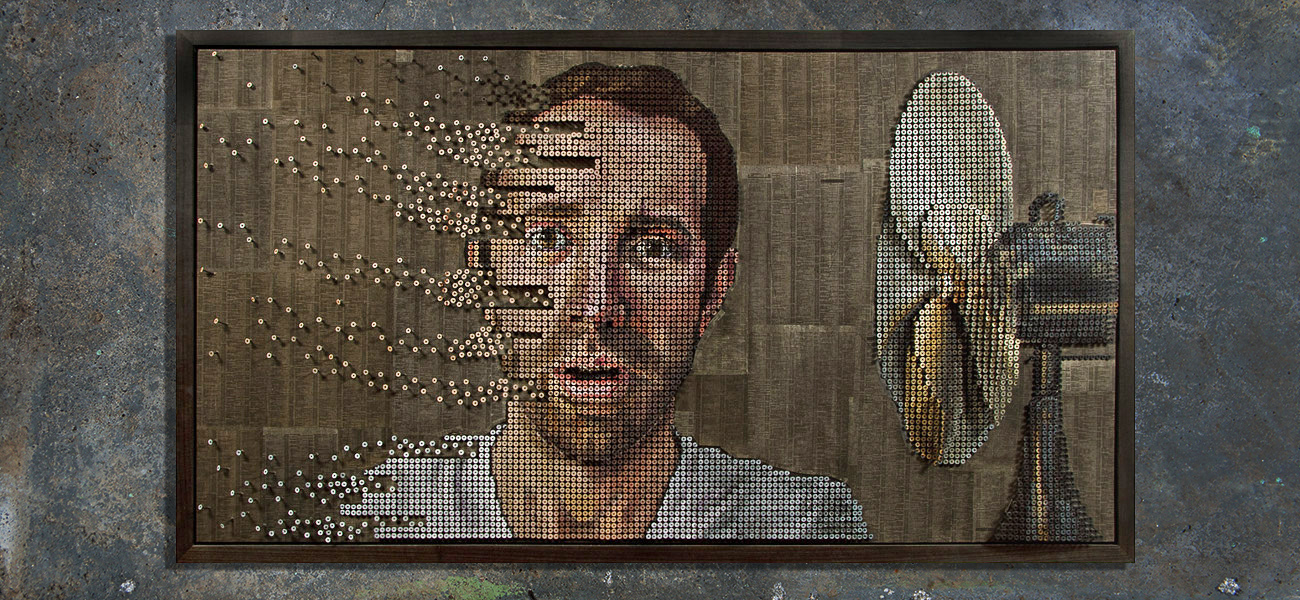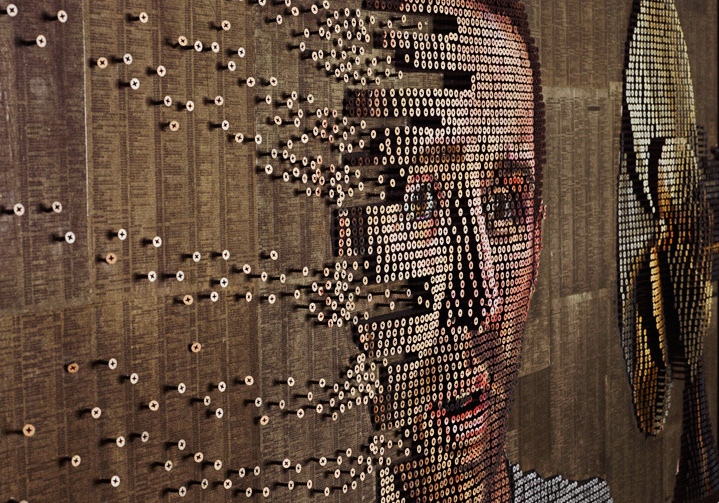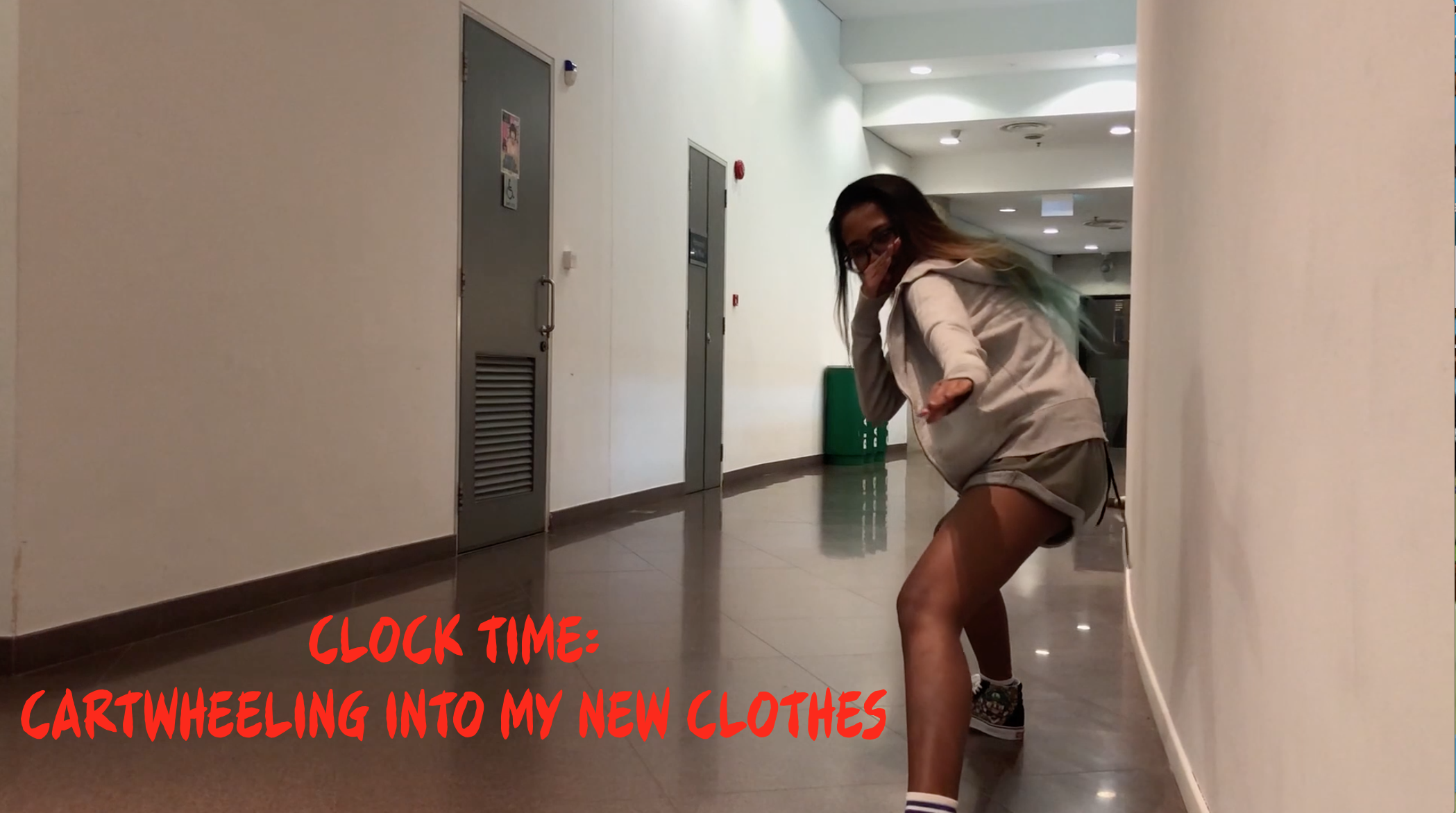For this project, I’ve decided to discuss three different works:
- Shane Dawson – “Switching Lives With A Blind Person” (Interactive Social Experiment)
- John Cage – “4’33” (Experimental & Interactive Performance Art)
- Andrew Myers – “Tactile Art” (Interactive Art Installation)
My aim for this project is to create an interactive art installation that helps people or raise awareness regarding time and space instead of being a disturbance.
Artist Reference 1: “Shane Dawson – Switching Lives With A Blind Person”
Shane Dawson is a content creator on Youtube who is known for creating videos related to raising social awareness and conspiracies about the world in a humorous yet touching approach. He was inspired to create this video due to his curiosity about how a blind person carry on with their daily activities despite lacking their sense of sight which is essential and having a family history with cataract which worries him about his future.
0:00 – 4:53 : Molly, the blind person in this video explaining the various type of diseases that someone with sight impairment can be diagnosed with, will be assisting the normal guys go through the blind stimulation experience.
7:16 – onwards : Shane Dawson and his crew experiencing the lifestyle of the blind doing daily activities such crossing a road and buying stuff using a blind stimulation.
Subject: Experiencing the life of a blind person.
Form: The medium of this work is expressed in a video which uses edited time. The visuals of the interaction of the guys with normal sight and Molly are compressed and arranged in a way that will evoke emotions that will make you empathises with the blind and understand the lifestyle of a blind person.
Context: (Interactive Social Experiment)
Objective of this video is to remove their sense of sight and using the sound and their other senses to navigate around the space around them. Due to their unfamiliarity of losing their sight, it affected their navigation and movement in their surrounding space as they’re lost and affected their time as everything they do is slower since they’re not used to it. Hence, creating a challenge for the normal guys with the sight to overcome this blind stimulation experience.
Content:
It’s interesting how a blind person is assisting the guys with normal sight to go through this experience who are panicking and having anxiety attack as they entered the new realm of the blind’s world. For Molly, due to the routine (measured time) of using rhythmic movement of swinging the cane from left to right to assist with movement and coordination to move forward, she is used to navigating without her sense of sight. In addition, timing and sound is essential. As time pass, the blind learn how to manage their illness and it becomes a routine and cycle of working things out using sound and space to carry on with their lives. The normal guys going through blind stimulation experience headache and have a fear of moving because they have no sense of depth perception. Overall, their other senses such as their hearing heightened and their dependency on sound increases during this experience.
Incorporation of this artwork into my installation:
- Reaction of going through blind stimulation
- Navigating through space and rhythmic timing of sounds in our surroundings
Artist Reference 2: “John Cage – 4’33”
John Cage is a musical instructor who created a famous music composition which consists of entirely silence.
Subject: An anarchy of silence which is unconventional in a musical theatre.
Form: Musical compositional art piece which consists of nothing but silence but focuses on the surrounding sound in the musical theatre. The silence of the choir and band and the sound/noise created by the audience is part of the interactive art. Hence, the audience is a medium of this interactive art piece too.
Context: (Experimental & Interactive Performance Art)
The objective of the interactive performance art is the reaction of the audience in the theatre and the simplicity of the concept that which allows the audience to stop hearing and starting listening to the muted sounds in our surrounding.
Content: The simplicity of the concept creates an anarchy of silence because of an unpredictable outcome which allows the audience to listen to the sounds around them and appreciate it. It’s another form of musical sound and every single time this musical composition is played, there’s always a different outcome of the sounds created by the audience and that’s the beauty of this piece. It’s experienced time as this art piece evokes different emotions such as boredom, restlessness (me), agitation. The perception of time differs for each audience in the theatre due to different expectations of a musical theatre experience. Personally, the 4’33 musical composition felt really long to me and I became really restless but I got the point of this art piece. I became more aware of the sounds created by the people around me and that itself is an interactive experience of a life art piece.
Incorporation of this artwork into my installation:
- Reaction and thoughts of the participants due to their expectations regarding a certain topic
- Perception of time (Experienced time) of doing something that you’re forced to do or in an awkward situation
Artist Reference 3: “Andrew Myers – Tactile Art”

Andrew Myers is a tactile artist that uses nails to create a sense of perception of depth. Using screws of different heights, the artist creates topographic-like portraits by inserting the screws into wooden boards, making images with the meticulous gaps and grooves.
expressed movement and action – Fading Thoughts
Subject: “Please Touch the Art”
Form: An oil painting that uses nails to create a sense of perception of depth of the contours of the portraits’ face.
Context: (Interactive Art Installation)
Interactivity and inclusivity of people who are blind or those with low vision to appreciate art despite their disabilities. The art are meant to be felt to fully experienced and it focuses on making the experience more engaging (good experienced time).
Content:
For the Fading Thoughts artwork, it is inspired by a documentary made by film maker Benjamin Pitts. Through the different heights of the screws on the artwork, it expressed movement and action of the fan blowing the parts of the man away which can be felt by our hands. Usually, in art galleries, as viewers we are not allowed to touch the artwork hence, people with disabilities could not fully enjoy the beauty of it. Hence, by creating art pieces that allows people to feel it, allows everyone to have a good viewer experience of the art.
Incorporation of this artwork into my installation:
- Remove perception of depth through sight for the participants and allow them to experience it through their other senses.
- Experience and using all their senses to appreciate art.
Compare & Contrast:
Despite the three works are different in mediums/forms, it focuses on experience, reaction and sound relating to time and space.
Differences in usage of time in each artwork:
- Shane Dawson – “Switching Lives With A Blind Person”:
Measured time – (Lifestyle of a blind person; the routines they do to navigate their way, communication and rhythmic movement of the cane to assist movement in life)
Edited time – (to evoke emotions from the audience by rearranging impactful scenes together.)
- John Cage -“4’33”:
Experienced time – (Perception of time differs for everyone due to their expectations of the event they’re attending)
- Andrew Myers -“Tactile Art”:
Experienced time – (The viewing of the art pieces will be more engaging for those who are lacking in the aspect of sight by touching the artwork)
Biological time – (Using their body part(hands) to feel the artwork and evoking emotions through this experience)
Similarities in usage of time in each artwork:
- Requires participation and time of the audience (Interactivity)
- Brings them out of their comfort zone (Entering a new realm that the audience is not used to)
- Experience of audience participation of interacting with the object or situation (space) and their reaction based on their experience. (Different perspective and reaction in terms of emotions)
- Every artwork uses linear time.
- Manipulation of time –> Different perspective before, during and after experiencing with the artwork.
Focus on my final installation: Reaction/Experience, Perspective, Sound, Space through depth & Time. (Emotions)
I want my installation to be an interactive experience that uses sound and space through depth and navigation. Creating a reaction and an in-depth first-hand experience of the lifestyle of a blind person for the participant. It takes time to realise and empathise with someone’s lifestyle (Perspective). Focusing on experienced time.

































